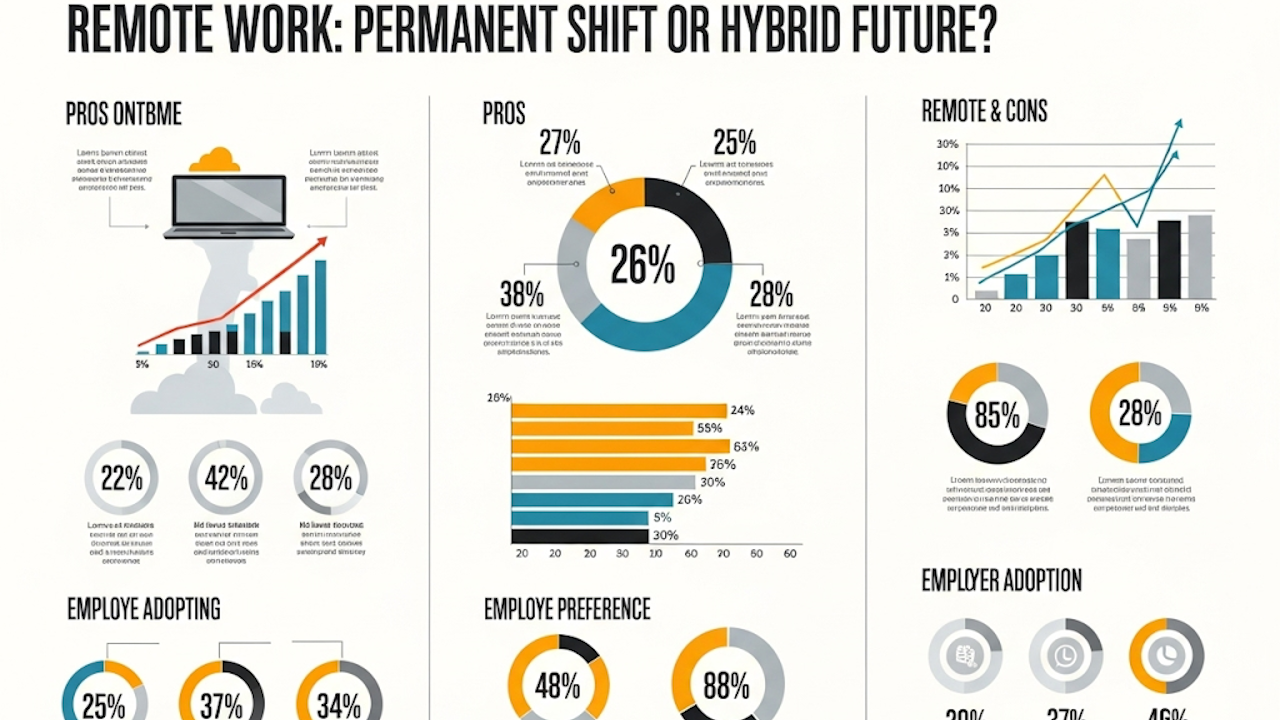The global events of recent years dramatically reshaped the landscape of work, propelling remote work from a niche benefit to a widespread necessity. As we move further into the 2020s, a critical question emerges: is remote work a permanent shift, or will a hybrid model ultimately define the future of how and where we work? The answer is nuanced, with compelling arguments for both scenarios, alongside a growing recognition of the hybrid approach as a balanced solution.
The Rise of Remote Work: Benefits and Challenges
The initial, rapid adoption of remote work highlighted its significant advantages. For employees, the benefits are clear: reduced commuting time and costs, greater autonomy over their schedules, improved work-life balance, and often, increased productivity due to fewer office distractions. This flexibility has been particularly appealing to younger generations, with studies indicating that only a small percentage of Gen Z employees desire full-time office work. Companies, too, have reaped rewards, including access to a broader talent pool unconstrained by geography, potential reductions in real estate costs, and enhanced employee satisfaction and retention.
However, the transition to fully remote work was not without its hurdles. Challenges for employees include the blurring of work-life boundaries, leading to potential overwork and burnout, feelings of isolation and disconnection from colleagues, and difficulties in maintaining team cohesion and company culture. For businesses, effective communication becomes more critical and complex, managing remote teams requires new leadership skills, and ensuring consistent access to resources and addressing potential inequities in career advancement for remote workers are ongoing concerns. Technological challenges, such as unreliable internet connections and security risks, also need careful management.
The Hybrid Model: A Balanced Approach
In response to both the benefits and challenges of fully remote work, the hybrid model has emerged as a popular and often preferred solution. This approach combines the flexibility of remote work with the collaborative opportunities of in-person office environments, allowing employees to divide their time between working remotely and on-site.
The advantages of hybrid work are multifaceted. It offers a better work-life balance than a traditional office setting while mitigating the isolation sometimes experienced in fully remote roles. Employees can leverage their peak productivity hours for focused, independent work at home, while coming into the office for collaborative sessions, team meetings, and relationship building. This intentional use of office time can foster stronger team bonds, facilitate spontaneous interactions, and enhance creativity through in-person brainstorming. For employers, hybrid models can still offer cost savings on real estate, while also improving collaboration and maintaining a stronger company culture than a fully remote setup. It also continues to broaden talent pools by reducing geographical limitations.
Yet, the hybrid model presents its own set of complexities. Logistical challenges arise in coordinating who is in the office on which days, managing desk bookings, and ensuring meeting rooms are equipped for both in-person and remote participants. There’s also the risk of an uneven employee experience, where those frequently in the office might receive more attention or opportunities, leading to “proximity bias.” Maintaining consistent communication and a unified company culture across a dispersed workforce requires deliberate effort and investment in technology and communication strategies.
The Future of Work: An Evolving Landscape
As we look ahead, the consensus among many experts is that some form of flexible work arrangement is here to stay. While some large corporations are mandating a full return to the office, many others, including major accounting firms, are embracing flexible or hybrid models to attract and retain talent. Employee preferences, particularly among younger generations, continue to lean towards flexibility.
The future of work will likely be characterized by ongoing adaptation and innovation. Companies will need to invest in robust technological infrastructure to support seamless hybrid operations, including advanced communication tools, project management software, and security protocols. Furthermore, a critical focus will be on upskilling leaders to effectively manage hybrid teams, fostering inclusive environments that ensure equitable opportunities for all employees, regardless of their location.
Ultimately, the “permanent shift” may not be to an exclusively remote or exclusively office-based model, but rather to a dynamic and adaptable approach where hybrid work becomes the new norm. The emphasis will be on optimizing work outcomes and employee well-being through flexible, technology-enabled, and employee-centric work arrangements that can evolve with changing business needs and societal expectations. The key to success will lie in finding the right balance that maximizes both individual productivity and organizational cohesion.

